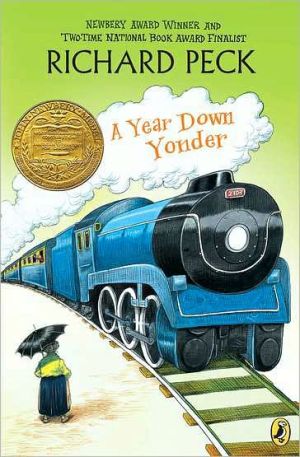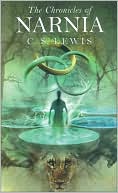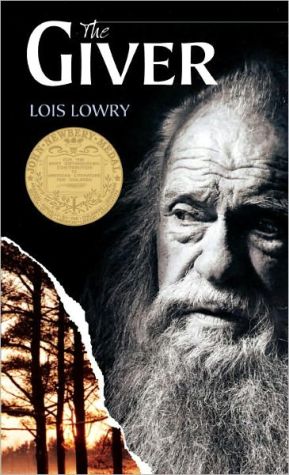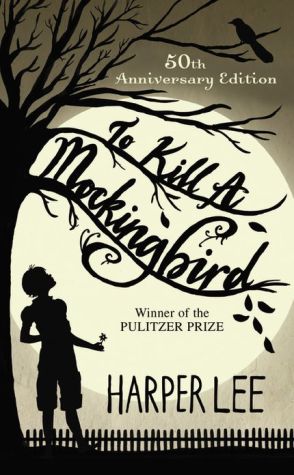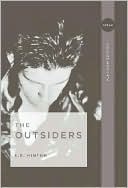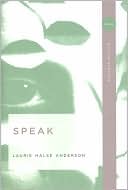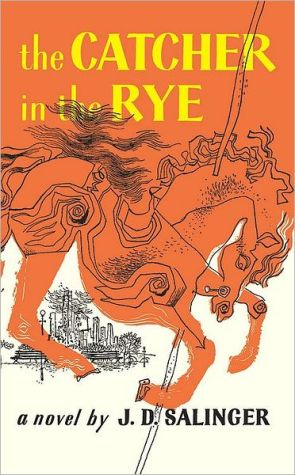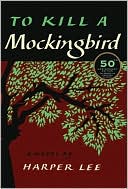A Year Down Yonder
Mary Alice and Grandma Dowdel return for more astonishing, laugh-out-loud adventures when fifteen-year-old Mary Alice moves in with her spicy grandmother for the year. Her extended visit is filled with moonlit schemes, romances both foiled and founded, and a whole parade of fools made to suffer in unusual (and always hilarious) ways.\ \ Wise, exuberant, and slyly heartwarming, Mary Alice's story is a fully satisfying companion to the celebrated A Long Way from Chicago. \ \ \ \ \ \...
Search in google:
Mary Alice and Grandma Dowdel return for more astonishing, laugh-out-loud adventures when fifteen-year-old Mary Alice moves in with her spicy grandmother for the year. Her extended visit is filled with moonlit schemes, romances both foiled and founded, and a whole parade of fools made to suffer in unusual (and always hilarious) ways.Winner of the Newbery Medal Notable Children s Recording (American Library Association)Publishers WeeklyIn this hilarious and poignant sequel to A Long Way to Chicago, Peck once again shows that country life is anything but boring. Chicago-bred Mary Alice (who has previously weathered annual week-long visits with Grandma Dowdel) has been sentenced to a year-long stay in rural Illinois with her irrepressible, rough and gruff grandmother, while Joey heads west with the Civilian Conservation Corps, and her parents struggle to get back on their feet during the 1937 recession. Each season brings new adventures to 15-year-old Mary Alice as she becomes Grandma's partner in crime, helping to carry out madcap schemes to benefit friends and avenge enemies. Around Halloween, for example, the woman, armed with wire, a railroad spike and a bucket of glue, outsmarts a gang of pranksters bent on upturning her privy. Later on, she proves just as apt at squeezing change out of the pockets of skinflints, putting prim and proper DAR ladies in their place and arranging an unlikely match between a schoolmarm and a WPA artist of nude models. Between antic capers, Peck reveals a marshmallow heart inside Grandma's rock-hard exterior and adroitly exposes the mutual, unspoken affection she shares with her granddaughter. Like Mary Alice, audience members will breathe a sigh of regret when the eventful year "down yonder" draws to a close. Ages 10-up. (Oct.) Copyright 2000 Cahners Business Information.
Prologue \ It was a September morning, hazy with late summer, and now with all the years between. Mother was seeing me off at Dearborn Station in Chicago. We'd come in a taxicab because of my trunk. But Mother would ride back home on the El. There wasn't much more than a nickel in her purse, and only a sandwich for the train in mine. My ticket had pretty well cleaned us out.\ The trunk, a small one, held every stitch of clothes I had and two or three things of Mother's that fit me. "Try not to grow too fast," she murmured. "But anyway, skirts are shorter this year."\ Then we couldn't look at each other. I was fifteen, and I'd been growing like a weed. My shoes from Easter gripped my feet.\ A billboard across from the station read:\ WASN'T THE DEPRESSION AWFUL?\ This was to make us think the hard times were past. But now in 1937 a recession had brought us low again. People were beginning to call it the Roosevelt recession.\ Dad lost his job, so we'd had to give up the apartment. He and Mother were moving into a "light housekeeping" room. They could get it for seven dollars a week, with kitchen privileges, but it was only big enough for the two of them.\ My brother Joey -- Joe -- had been taken on by the Civilian Conservation Corps to plant trees out west. That left me, Mary Alice. I wished I was two years older and a boy. I wished I was Joey.\ But I wasn't, so I had to go down to live with Grandma Dowdel, till we could get on our feet as a family again. It meant I'd have to leave my school. I'd have to enroll in the hick-town school where Grandma lived. Me, a city girl, in a town that didn't even have a picture show.\ It meant I'd be living with Grandma. No telephone, of course. And the attic was spooky and stuffy, and you had to go outdoors to the privy. Nothing modern. Everything as old as Grandma. Some of it older.\ Now they were calling the train, and my eyes got blurry. Always before, Joey and I had gone to Grandma's for a week in the summer. Now it was just me. And at the other end of the trip -- Grandma.\ Mother gave me a quick squeeze before she let me go. And I could swear I heard her murmur, "Better you than me."\ She meant Grandma.
\ From Barnes & NobleRichard Peck, whose hysterical historical novel, A Long Way to Chicago, was a 1999 Newbery Honor Book, does it again. This time out, Peck wins the 2001 Newbery Medal for A Year Down Yonder, the sequel to his 1999 award winner, which introduced the indomitable and fearsome figure of Grandma Dowdel as viewed through the eyes of her grandson Joey. Once again Peck takes his readers to the tiny Illinois town where this coolly conniving grandmother lives, but now we see her through the eyes of her granddaughter, 15-year-old Mary Alice. \ It's 1937, and while rumor has it that the worst of the Depression is over, the "Roosevelt recession" is firmly in place. It's not bad enough that Mary Alice's dad has lost his job, or that her parents are being forced to move into a "light housekeeping" room, or that her older brother Joey has gone off to plant trees out west with the Civilian Conservation Corps. Now Mary Alice must spend a year living with her feisty and formidable grandmother in a hick town where the other kids in school think of her as the "rich Chicago girl." Grandma Dowdel is well known about town and most of the residents cower in fear at the mere sight of her. It's a fear well justified, for the woman has little tolerance for fools, a rifle she knows how to use, and a knack for cooking up outrageous schemes. At first, Mary Alice finds herself an unwitting (and often unwilling) accomplice to some of Grandma's more shocking manipulations, but as time goes by, Mary Alice discovers a knack of her own when it comes to conniving.\ Peck evokes a wonderful sense of time and place, depicting the harsh realities and simple lifestyles of these Depression-era folk through catchy colloquialisms and delightful details. Grandma Dowdel is a truly unique and unforgettable character capable of generating awe as well as side-splitting laughter. The supporting cast is equally entertaining, from the bumbling antics of the local farm boys to the snooty-nosed members of the local DAR group. And as Mary Alice struggles to deal with some typical (and not so!) adolescent problems -- peer pressure, poverty, love pangs, and the indignities of using a privy -- Grandma Dowdel teaches her some of the larger lessons in life, including her own brand of justice and the real meaning of unconditional love.\ --Beth Amos\ \ \ \ \ \ Publishers Weekly\ - Publisher's Weekly\ In this hilarious and poignant sequel to A Long Way to Chicago, Peck once again shows that country life is anything but boring. Chicago-bred Mary Alice (who has previously weathered annual week-long visits with Grandma Dowdel) has been sentenced to a year-long stay in rural Illinois with her irrepressible, rough and gruff grandmother, while Joey heads west with the Civilian Conservation Corps, and her parents struggle to get back on their feet during the 1937 recession. Each season brings new adventures to 15-year-old Mary Alice as she becomes Grandma's partner in crime, helping to carry out madcap schemes to benefit friends and avenge enemies. Around Halloween, for example, the woman, armed with wire, a railroad spike and a bucket of glue, outsmarts a gang of pranksters bent on upturning her privy. Later on, she proves just as apt at squeezing change out of the pockets of skinflints, putting prim and proper DAR ladies in their place and arranging an unlikely match between a schoolmarm and a WPA artist of nude models. Between antic capers, Peck reveals a marshmallow heart inside Grandma's rock-hard exterior and adroitly exposes the mutual, unspoken affection she shares with her granddaughter. Like Mary Alice, audience members will breathe a sigh of regret when the eventful year "down yonder" draws to a close. Ages 10-up. (Oct.) Copyright 2000 Cahners Business Information.\ \ \ Publishers WeeklyIn this Newbery Honor book, Chicago-bred Mary Alice has been sentenced to a year-long stay in rural Illinois with her irrepressible, rough and gruff grandmother. Soon, however, she becomes Grandma's partner in crime, helping to carry out madcap schemes to benefit friends and avenge enemies. In a starred review, PW called this sequel to A Long Way to Chicago "hilarious and poignant." Ages 10-14. (Dec.)\ \ \ \ \ From The CriticsThings can't get much worse, or can they? The year is 1937. The Great Depression seems like it will never end. Times are hard, especially for Mary Alice. Her parents' job will not allow her to live with them, so she's being sent to spend the year with Grandma Dowdel. As she climbs aboard the Blue Bird train, she overhears her mother mutter, "Better you than me." She had been to Grandma Dowdel's before but always with her brother Joey, and then those visits were only for a week. But, this was going to be a whole long year in a hick town away from the excitement of Chicago. She would not be able to see her parents or Joey, and worst of all, Mary Alice was going to be alone with Grandma Dowdel. Everyone in town knows Grandma and seems to fear her looming presence. And no wonder. Physically she's large, with a corresponding personality. She's intimidating, imposing, and frankly a bit odd. If Mary Alice had forgotten, she is reminded upon her arrival at the train station where, after a brisk greeting, she's whisked away and, without even the chance to unpack, is taken directly to school. Things don't get much better, with a school devoid of boys and brimming with cliquey girls. But after some initial challenges, she warms to small town living, and her grandmother. Grandma Dowdel is full of surprises. She knows how to deal with bullies—a method involving delicacies from her larder, a pair of boots, and a stolen horse. She is also very creative in acquiring pecans for a pie—some pluck and an old farm tractor required. But mostly Mary Alice learns the endearing qualities behind her grandmother's eccentric behavior. Before she knows it, she feels like she's becoming Grandma Dowdel, andshe doesn't mind at all. Richard Peck is a well-known writer with more than two dozen children's books to his credit. The prequil to A Year Down Yonder, called A Long Way from Chicago (Dial, 1998), earned him a 1999 Newbery Honor Award. His new work promises more accolades. Unlike many sequels, the second book stands firmly on its own. In fact, his characters and sense of place are even stronger in this second book. Especially impressive is his ability to depict Grandma Dowdel's stronger character traits as assets, rather than flaws. Further, he seems to have an innate understanding of the young mind—and heart—making his female characters real and engaging. But if this doesn't win you over to A Year Down Yonder, the book is also deliciously funny. Peck interweaves humor into his delightfully unpredictable plots. But parents should be strongly cautioned, their children should not read the book alone. Why should they have all the fun? 2000, Dial, $16.99. Ages 8 to 12. Reviewer: Michelle Wehrwein-Albion — The Five Owls, January/February 2001 (Vol. 15 No. 3)\ \ \ \ \ From The CriticsThis sequel to Newbery Honor book, A Long Way from Chicago, focuses on Mary Alice's junior year of high school and her deepening bond with her feisty Grandma Dowdel in rural Illinois. Mary Alice and her family are living in Chicago, where they are trying to get back on their feet after feeling the effects of the Great Depression. The most intriguing character is clearly the wise and very unconventional grandma, a Depression-era Robin Hood who continues to embarrass and outsmart locals most deserving of her tricks and to help those most needy without making them feel that she has done them a favor. Several other adult characters and a handful of classmates round out this story, including Royce McNabb, another newcomer to the community who announces at the end of the school year that he'll write to Mary Alice from the University of Illinois. In an afterward, Mary Alice returns to Grandma Dowdell's house for her wedding to Royce, which occurs during World War II. She ends the story by telling the reader, "We lived happily ever after." An odd ending to an otherwise entertaining, light read about everyday life as managed by people who survived the Great Depression. Genre: Historical/Growing-Up/Family 2000, Dial, 120 pp., $16.99. Ages 9 up. Reviewer: Sheila Gullickson; Moorhead, Minnesota\ \ \ \ \ Children's LiteratureA Year down Yonder seems more a companion than a sequel to Peck's 1999 Newbery Honor book, A Long Way from Chicago. Peck shows his brilliance in setting up parallel structures and creating two very different books. In the first book, Joey and his younger sister, Mary Alice spend a series of summers with their cantankerous, eccentric grandmother and Joey tells the story. The second book takes place in 1927. Joey is working with the CCC planting trees out west, their father is out of work, and sixteen-year-old Mary Alice must spend a year with her grandmother enrolled in a hick school. There is continuity of place and character in both books. The small town's culture is still the same, those who are snobby have no right to be, those who have no money are rich in some way, and everyone fears Mary Alice's grandmother. Mary Alice's voice and sensibilities are different than Joey's. Her voice is softer, more poetic and inquisitive. As much as Joey loves his grandmother, his understanding comes in glimpses and never runs quite as deep as Mary Alice's perceptions. Shared history and gender has allowed Mary Alice to understand and trust her grandmother's Robin Hood style of justice. She knows the deserving always receive a big slice of pie, whether it is pecan or humble. There are still wonderful similes and colorful dialogue, especially coming from Grandma. She sums out whole stories in a vivid sentence, or two. "When I was a girl," she tells Mary Alice, "a tornado hit an outdoor band concert. It twisted the tuba player four feet into the ground like a corkscrew before we could get help to him." These are the lines that make you laugh out loud. When Mary Alice questions her grandmother about theage of an ancient woman, she answers, "You would have to cut off her head and count the rings in her neck." Soon Mary Alice begins to see, think and talk like her grandmother. From pithy, startling analyses like the time she sizes up a bully and declares, "If you are going to read minds, start with a simple one," to her las\ \ \ \ \ KLIATTBecause of a recession in 1937, Mary Alice's family is once more in financial difficulties. Her brother Joey goes out West with the Civilian Conservation Corps and Mary Alice is sent again to her grandmother's house in a small town in Illinois. Now she is 15 years old and must attend the tiny high school where the girls are bitterly competitive. The chapters read like vignettes, offering amusing stories of the eccentric grandmother, who truly seems to enjoy getting the town in an uproar. One escapade is more outlandish than another. The one that stands out is an episode when Mary Alice gets up the nerve to ask the one handsome boy in her class to come over to help her with her math. The two are self-consciously trying to find things to say when suddenly there are shrieks from the attic and the naked postmistress comes racing down the stairs and out the door—with a live snake draped around her body. It seems that the boarder, an artist, was using the woman as a model when a snake (which grandmother encouraged to live in the rafters to keep the bird population in check) landed on the woman's body to create the chaos. "Grandma worked around her to get the front door open. With a scream and a hiss, Maxine and the snake leaped through it. They did a fast Hawaiian hula off the porch and skimmed around the snowball bushes, making for town. That's too good a show to keep to ourselves,' Grandma said." The potential boyfriend edged to the door. "Well, I probably ought to get going,' he said. But...thanks. It was a real interesting afternoon. I never saw a __' But now he was gone...and all my hopes went with him." By the end of the school year, the relationship between Mary Alice and hergrandmother has changed beyond recognition, and Mary Alice feels that she is in her true home. This kind of humor is what Peck can do so well - small-town shenanigans. He is describing a completely different world, one long past, but he certainly makes it interesting. (Sequel to a Long Way from Chicago). KLIATT Codes: J—Recommended for junior high school students. 2000, Penguin Putnam/Dial, 130p, 99-34159, $16.99. Ages 13 to 15. Reviewer: Claire Rosser; January 2001 (Vol. 35 No. 1)\ \ \ \ \ VOYASequels are a tricky business. Many are pale companions to their originals. With a skillful writer such as Peck, however, sequels can shine and sparkle with new life. Such is the case with this sequel to his Newbery Honor-winning A Long Way from Chicago (Dial, 1998/VOYA December 1998). The year is 1937, and the aftermath of the Great Depression is still being felt by the Dowdel family. Reluctantly, the Dowdels decide to send Mary Alice to live with Grandma for a year. Mary Alice barely has been able to endure summers with Grandma in the company of her older brother. How will she survive a year in this hick town by herself? Present in this hilarious tale are the requisite "villains"—young boys wreaking havoc on Halloween, snooty women who dare to leave Grandma out of their plans, and others too blind to see Grandma as a more than formidable opponent in any fight. Told in a series of interlocking stories as was the first book, the novel never loses its charming sense of humor even though the vignettes ultimately deal with important issues such as class, gossip, and friendship. This book will make an excellent read-aloud to middle school classes. History teachers might want to share a story or two from the novel as a lead-in to the discussion of the society of the Great Depression and the recession that followed. VOYA CODES: 5Q 3P M (Hard to imagine it being any better written; Will appeal with pushing; Middle School, defined as grades 6 to 8). 2000, Dial, 144p, $16.99. Ages 12 to 14. Reviewer: Teri Lesesne \ SOURCE: VOYA, December 2000 (Vol. 23, No. 5)\ \ \ \ \ \ School Library JournalGr 5-8-Richard Peck's Newbery Award-winner (Dial, 2000) is a multi-layered story of small town life spiced with humor, love, and a bit of history. Although 15-year-old Mary Alice Dowdel is none too happy when she must spend a year with Grandma Dowdel. It's 1937, and her parents are only able to afford a small room in Chicago, and her much-loved older brother, Joey, is off serving in the Civilian Conservation Corps. Mary Alice worries about fitting in at the two-room schoolhouse, and wonders how she'll cope with her crusty, sometimes embarrassingly eccentric grandmother. Harsh Depression era realities are not ignored, but listeners will spend most of their time laughing at the way Grandma outwits a classroom bully, some Halloween pranksters, and the local D.A.R. An itinerant artist, a risqu postmistress, and a community full of memorable characters provide more laughs. After twelve months, Mary Alice feels at home in this tiny Illinois town, and has developed a new respect and abiding affection for her maverick grandmother. Lois Smith's masterful comic timing has a country flair that conveys Peck's humorous and heartwarming book perfectly. This is a must buy for every library with audiobook collections. Even high school and adult audiences will enjoy A Year Down Yonder.-Barbara Wysocki, Cora J. Belden Library. Rocky Hill, CT Copyright 2001 Cahners Business Information.\ \ \ \ \ From The CriticsMary Alice's summers in a hick town with her grandmother are one thing; but when she faces a year with the cantankerous woman, she finds her life challenged with new ideas and a feisty woman who can set the town on its heels. A warm story of very different personalities who clash and learn.\ \ \ \ \ Kirkus ReviewsSet in 1937 during the so-called "Roosevelt recession," tight times compel Mary Alice, a Chicago girl, to move in with her grandmother, who lives in a tiny Illinois town so behind the times that it doesn't "even have a picture show." This winning sequel takes place several years after A Long Way From Chicago (1998) leaves off, once again introducing the reader to Mary Alice, now 15, and her Grandma Dowdel, an indomitable, idiosyncratic woman who despite her hard-as-nails exterior is able to see her granddaughter with "eyes in the back of her heart." Peck's slice-of-life novel doesn't have much in the way of a sustained plot; it could almost be a series of short stories strung together, but the narrative never flags, and the book, populated with distinctive, soulful characters who run the gamut from crazy to conventional, holds the reader's interest throughout. And the vignettes, some involving a persnickety Grandma acting nasty while accomplishing a kindness, others in which she deflates an overblown ego or deals with a petty rivalry, are original and wildly funny. The arena may be a small hick town, but the battle for domination over that tiny turf is fierce, and Grandma Dowdel is a canny player for whom losing isn't an option. The first-person narration is infused with rich, colorful language—"She was skinnier than a toothpick with termites"—and Mary Alice's shrewd, prickly observations: "Anybody who thinks small towns are friendlier than big cities lives in a big city." Year-round fun. (Fiction. 11-13)\ \
